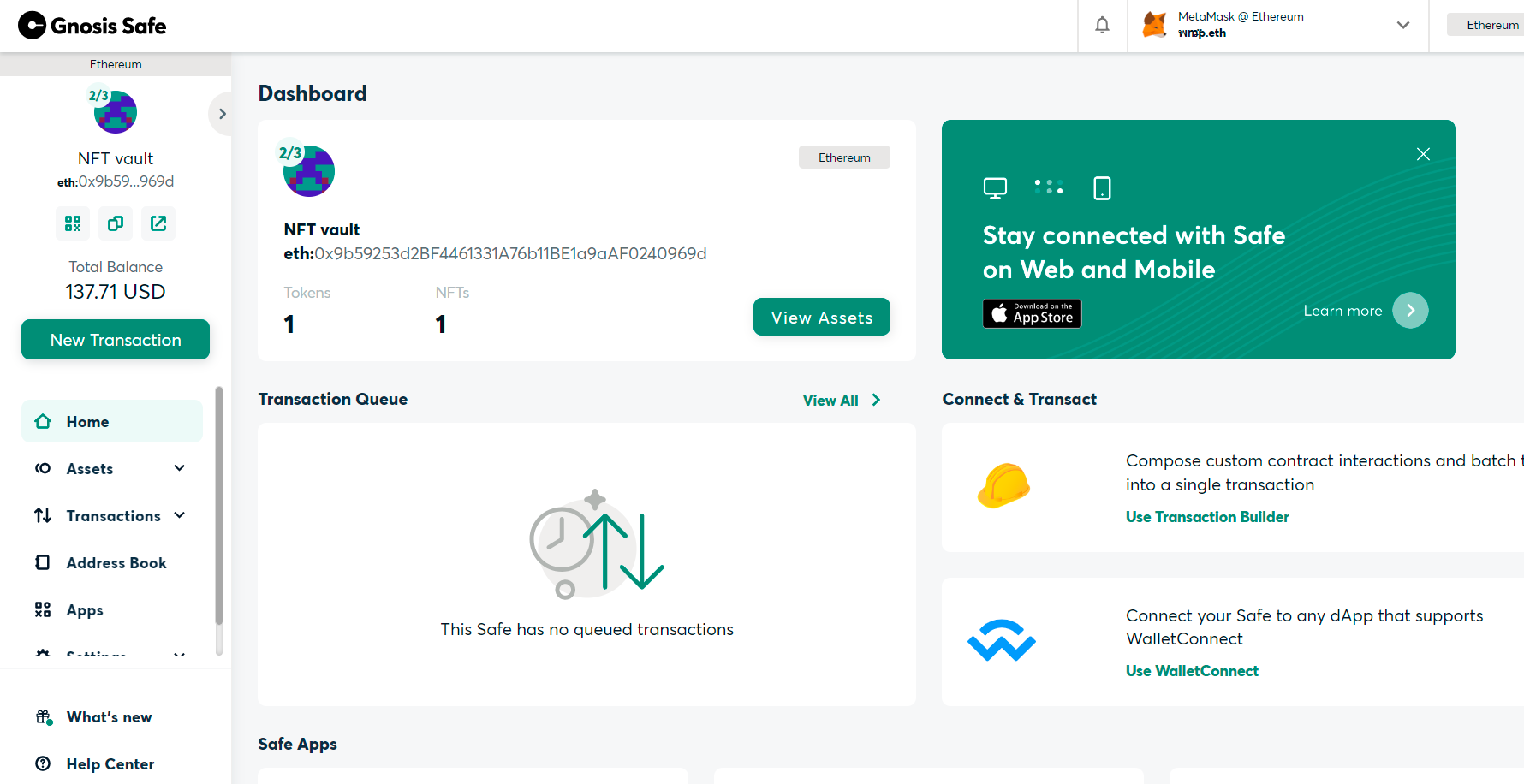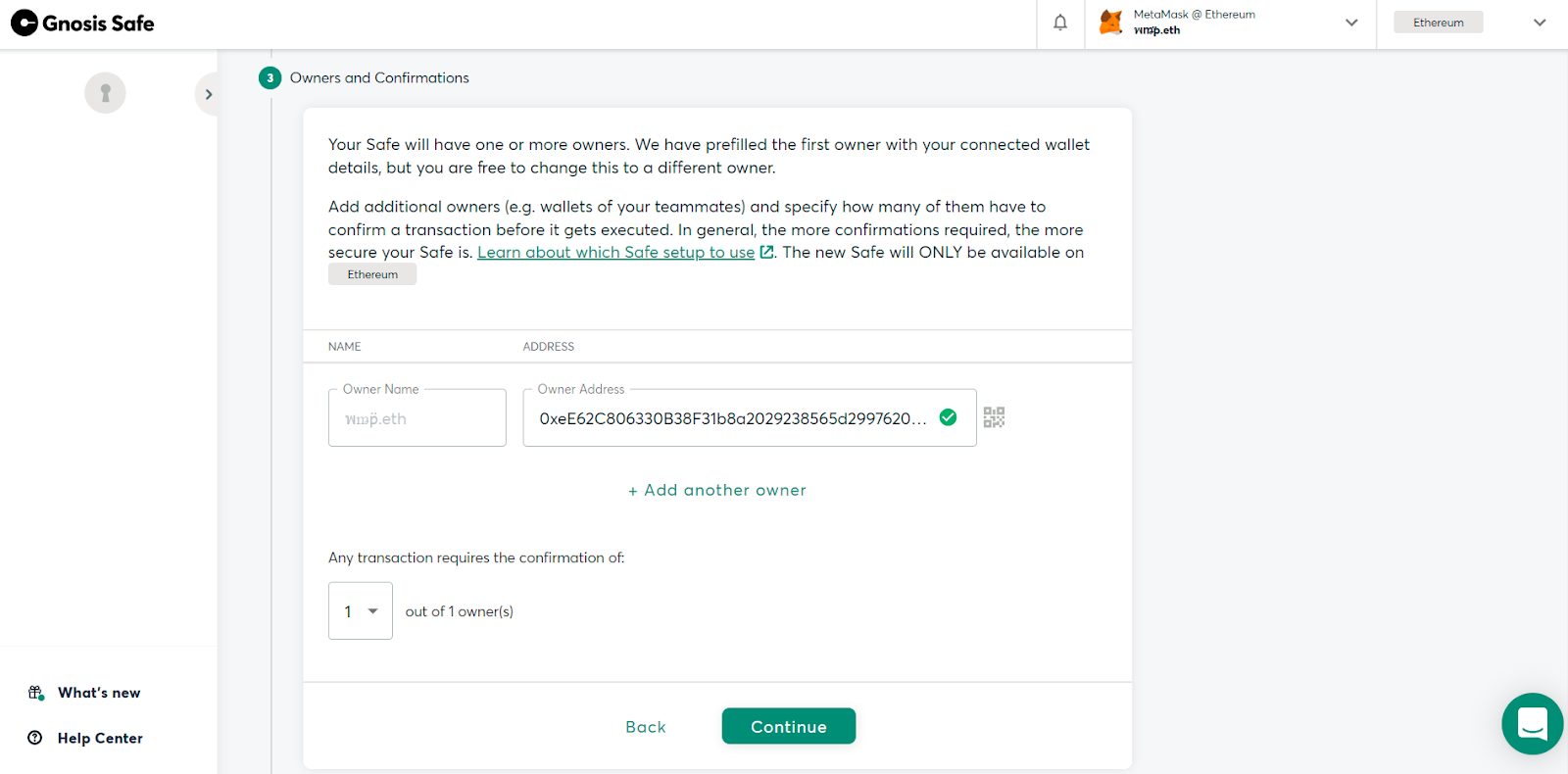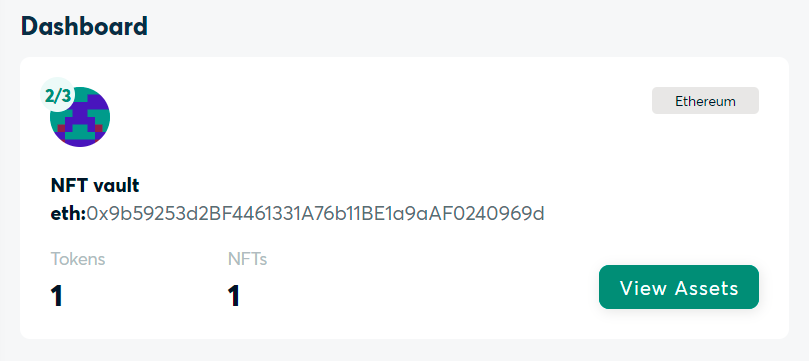Dear Bankless Nation,
Have NFTs you want to store securely for the long-term?
A great resource for this is Gnosis Safe, a streamlined multi-signature smart contract wallet that lets you customize the conditions under which your assets can be moved.
The dapp supports ERC721-compliant tokens, so it’s a fantastic avenue for creating “vaults” that can resolutely defend most of your NFTs for years to come.
All that said, I’ll walk you through the basics of managing NFTs via Gnosis Safe for today’s Metaversal.
-WMP
How to create an NFT vault with Gnosis Safe

Gnosis Safe explained
When you create a Gnosis Safe, you’re creating a smart contract that will serve as the foundation of a crypto wallet.
This wallet can be “owned,” or managed, by as many addresses as you’d like, hence the multi-signature moniker. In other words, you can create a Gnosis Safe where crypto assets need signatures from 2-of-3 addresses to move, or 4-of-5 addresses to move, and so forth.
This multi-sig model can be used for a range of purposes, like managing company funds or securing a DeFi project’s DAO treasury, and lately users in the NFT ecosystem have been increasingly turning to Gnosis Safes as de facto digital vaults for protecting their collections.
If you have a regular wallet and a scammer compromises it somehow, you’ll lose the NFTs therein. Yet with a Gnosis Safe no single address can unilaterally move funds, so your collection would remain unscathed from a single compromise — or even multiple ones! Accordingly, the more signers you add to your Safe, the safer it will be.
On the flip side, your tokenized assets are as safe as your signers are trustworthy, so only add signing addresses to your Gnosis Safe that you control or that belong to people that you trust totally, e.g. a spouse or close family members.
Creating a Gnosis Safe

- Go to gnosis-safe.io/app/welcome and connect a wallet
- Click the + Create a new safe button
- In the ensuing UI select your desired deployment chain — Ethereum and over 10 other networks are currently supported
- Then name your Safe, e.g. “My Vault”
- On the next screen you’ll add your other desired signing addresses and configure how many owners have to confirm transactions, e.g. 2 out of 3 owners
- Finally, review all your Safe’s details to make sure everything looks correct, then press the Create button
- You’ll next be prompted to complete the deployment transaction — at the time of writing, the gas cost for deploying on Ethereum was 0.0124 ETH or ~$17 USD
Managing your NFTs

Back in the main Gnosis Safe dashboard, you’ll be able to see your new NFT vault and its address.
You can then copy the vault address and use it to transfer your desired NFTs into your Safe, after which the multi-sig rules you configured will govern how the assets can be moved.
If you’re ever interested in moving an NFT back out of the vault, head to the “Assets” section of the Gnosis Safe dashboard and click on the NFTs button. You can then press the “Send” button on your NFT of choice and then complete the transaction requirements.
Action steps
- 🛡️ Try setting up an NFT vault with Gnosis Safe
- 🙇 Read my previous write-up zkEVM + NFTs if you missed it!
